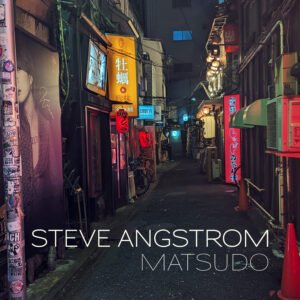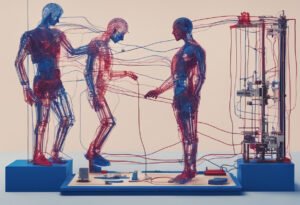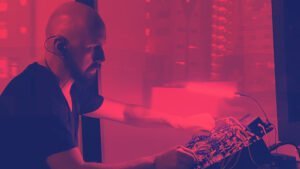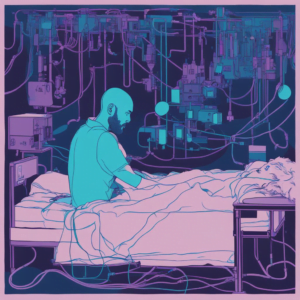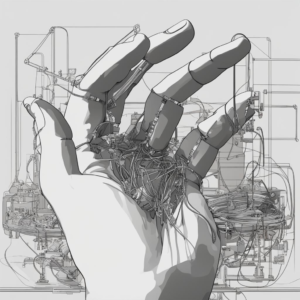A DYCP is a UK arts grant for “Developing Your Creative Practice’. It’s often misunderstood and so the applications are usually terrible (I read a bunch before I applied for mine).
This is a quick helper for anyone applying to the Arts Council of England (ACE) for a Developing Your Creative Practice grant (DYCP). I was lucky enough to win one of these grants, so I wanted to pass on some help for people wishing to submit a DYCP. I’m no expert but I did a lot of research before starting my application, so perhaps my thoughts will help others.
Also, I’ve included my actual DYCP form responses, so you can see the questions and how I answered for a successful DYCP submission .
Advice for a successful DYCP application
1: So … What is the DYCP?
They describe it reasonably clearly “DYCP supports individuals who are cultural and creative practitioners and want to take time to focus on their creative development.” So, notice that its for individuals. That’s the first thing. Don’t try to apply for your group, or your collective, this is a single artist fund.
Unfortunately the Arts Council site has hidden the most crucial guidance document for DYCP , and it’s this one the “Developing Your Creative Practice- Guidance For Applicants ” . That document used to be on the main DYCP page, and its fallen off! Pay very close attention to that, as it essentially tells you exactly what to do.
2: What sort of activities should you apply for?
Notice that it says clearly it’s for you ” …to take time to focus on their creative development.” So, that means it’s for you as an individual to explore outside of what you normally do. In their documentation it explains and gives examples, I think one example is of a dancer who is aging out and wishes to try a bit of training in the fields of motion capture and also some other things like puppetry and voiceover (I forget TBH) . What they want is to offer an opportunity for you to really branch out and grow. So don’t put down that you are a Jazz Drummer hoping to get lessons on Drum and Bass drumming, that’s not exciting enough. If you are a singer probably don’t say you want to develop your singing.
3: No projects, only learning and experimenting
The other big mistake people make in applying is they apply with a project or end product in mind. Perhaps you want to go on tour, or want to release an album, and you want to hire a bunch of dancers and choreographers to make this whole package sellable. Well forget it. This isn’t a project grant and in their documentation they explicitly warn against trying to shoehorn a project into this grant. The grant is for you to get weird and experimental, to develop skills. The only outcomes should be something like “I transitioned to a new and more suitable path”.
4: The scary prospect of the budget and booking your mentors
The most difficult part of the process is the timeline and budget. It can seem daunting to book potential mentors and artists 5 months before you intend to hire them … all the while knowing that the successful applicant rate is less than 20%.
Be reassured – the budget isn’t actually a fixed allocation of funds locked in time, but instead it’s an indication to the ACE of how you intend to proceed in project management towards your stated aims, as a way of showing that you understand planning. Its to prevent you from thinking you can just get a pile of cash and spend it on “stuff”. It’s an indication of intent, not something you have to chain yourself to.
I contacted ACE directly to clarify this after I was awarded, to make sure my understanding was correct and ACE replied “If you wish to make like-for-like substitutions for expenses listed for your project and are still able to deliver the aims set out in the original application you can work with people who are in equivalent roles and/or fields to help you carry out your development work. They do not have to be the same individuals who you listed in your application“.
So, it’s the aims which are important, not the specific figures in your initial budget. They also said about tracking these changes “you can tell us about this in final or interim activity report“. So at the end, if you decided not to take a puppeteer class but instead studied modern dance, you simply tell them in your report. You can also delay the start, or end dates, and stretch your DYCP duration out as long as you like. It’s up to you.
5: The Hell of Grantium – it’s confusing and takes forever!
Grantium is the ACE web platform for managing your grants, you might find it a little difficult to use and confusing at first, this difficulty increases exponentially until you doubt your sanity and start to wonder if the creators of Grantium are actively fucking with you. The interface is massively confusing, there are pages which have conflicting instructions on, some in bold, others in bold and red. The layers and sections seem to follow no logic and the whole thing is prone to crash on you just as you were about to hit “save and next”. Understand that it is not you. You are not an idiot. Grantium was sent by the devil to make us turn away in despair.
Unfortunately even claiming your money is monumentally confusing and takes about a month from award notice to receiving the cash, and that’s if you do everything correctly (which I did not). Give yourself ten times the amount of time to complete your form, and when they say “when do you want to start your project” look for the award date and add at least two months. I was first notified on the 11th of July, and then inching through the process of acceptance letters, printouts, scans, bank form uploads, and secret Grantium ticky boxes … I received my BACS notification on the 4th August then received the funds 5 working days later on August the 10th.
So don’t schedule your start date too soon!
6: Watch the character count
The big tripping up point for most applicants is the character count, pay very close attention to the documentation, the PDF on the ACE site. The word count or character count on each field can vary, It includes spaces (as I recall), but the text entry boxes wont actually stop you – even if you type 10,000 characters. So type your stuff up in your favourite text editor, do a character count and paste it in.
7: To score highly – Don’t be confusing
When writing my DYCP I pictured the the poor souls assessing these forms. They must receive tens of thousands, and I assume that they slip into snowblindness pretty quickly. So it’s important to make your “story” legible and clearly fit the criteria, Many people start their first answer and response in a confusing and unclear way, making it very difficult to assess and score. Instead take a look at the guidelines for each section and make sure you are clearly stating your past, your aims, and your expectations in a way that wont confuse a tired assessor on a Friday afternoon at 4pm.
Ask a friend to read over your answers, and see if it makes sense to them.
And now, here’s my DYCP application.
STEVE ANGSTROM – DYCP APPLICATION
Q1: Tell us about yourself and your creative practice
I am a musician with Parkinson’s Disease, which is now progressively affecting my movement and ability to perform.
My background is in electronic music ranging from ambient to soundtracks to dance floor, but with a conceptual focus. My artistic interest has always been mediated narratives of self, meaning the way that our media landscape both reflects and reinforces our modes of being. I repurpose sounds to reflect and challenge that.
I have a 30 year history of releasing and performing music, including live sessions for Radio One including a Peel Session and sessions for Radio 3. I have performed on many stages around Europe including the Radio One stage at Glastonbury and have recently had my back catalogue released as a box set by Cherry Red Records, and also a selection of my archive material released by Sleepers records on vinyl. I was recently awarded Artist in Residency status at Metal Culture (Liverpool) exploring issues of health through sound art, and additionally I was asked to work with FACT in a continuing residency and form part of the Sound Art Network. I’ve recently created a soundtrack for a film drama exploring the unique challenges of queer disability, for Channel 4/Film 4.
Unfortunately, while releasing and performing opportunities are still offered, I am less able to take them as my Parkinson’s disease is progressively reducing my ability to play, or cope with the stresses involved.
I hope to use my experience to develop my creativity and my practice in ways which are more sustainable and expressive of my situation as a disabled person, and engage differently abled audiences and participants in a new perspective via sound art.
Q2: Tell us about the developmental opportunity you want to undertake, what you hope to get out of it, and how you will go about it.
As someone who has been diagnosed with Parkinson’s disease, my ability to perform music has been greatly impacted by my movement and mobility.
However, I am determined to continue expressing myself creatively and exploring new avenues that align with my condition. I strongly believe that the cultural significance of gesture, movement, and creativity can be harnessed to create new and innovative forms of art.
To achieve this firstly I plan to explore the potential of kinetic art to create music, collaborating with experienced practitioners to develop interactive automatons that can serve as physical substitutes for myself. I am also interested in the world of installations, where the audience’s physicality is a determining factor and they are fully immersed in the audio experience. While physical installations are exciting, I am equally intrigued by the possibilities of virtual installations that can be accessed online through 3D spaces and gaming engines, making them more accessible to people of all abilities.
In addition to exploring these new artistic forms, I am also eager to learn how to express my feelings through spoken word and integrate this skill into my future audio works, installations, or kinetic artworks.
I believe that my unique perspective as an artist with Parkinson’s disease can bring a fresh and inspiring element to the art world. With your support, I can continue to pursue my passion for creativity and push the boundaries of what is possible
Q3: Why is this important for your practice at this point, and how will this help create future opportunities?
My aims are to expand my creative horizons despite my increasing disability. I aim to find new methods and creative practices through which I can express myself and engage audiences more fully and also to find ways of creating thought provoking works about mortality and physical existence, the transience
of life.
I’m at a crucial point in my disability where I still have some dexterity and movement, but not enough to play my instruments, or use a computer to the degree I once did. I have been made aware by my specialists that in 5 years I will have greatly reduced movement. So this is my opportunity to ensure a creative future for myself. I hope by the end of this process I will have built the skills, and the interpersonal connections to create artworks which outlast me, and will express my interest in mediated culture, through new prisms of automated kinetic art, or audio installations, and to better express myself and my developing condition in a way which resonates and affects participants.
After this process my artistic practice will become possible again, transformed from performer and recording artist into an artist who can express myself and disability through installation, kinetic and other artforms. I hope to help and inspire others to understand that a life-changing diagnosis does not mean the
end to their creativity or their ability to express themselves
I hope that helps, I’m not an expert on these things and I might have got a few things wrong (probably have) but I think that anyone who feels they might benefit from expanding their skills could probably make a better go of it than most of the failed applications I saw. So, good luck!
